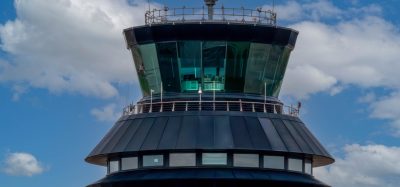Assistance for airports transitioning to the new GRF methodology as November deadline looms
- Like
- Digg
- Del
- Tumblr
- VKontakte
- Buffer
- Love This
- Odnoklassniki
- Meneame
- Blogger
- Amazon
- Yahoo Mail
- Gmail
- AOL
- Newsvine
- HackerNews
- Evernote
- MySpace
- Mail.ru
- Viadeo
- Line
- Comments
- Yummly
- SMS
- Viber
- Telegram
- Subscribe
- Skype
- Facebook Messenger
- Kakao
- LiveJournal
- Yammer
- Edgar
- Fintel
- Mix
- Instapaper
- Copy Link
Posted: 24 June 2021 | Thomas Romig | No comments yet
Thomas Romig, Vice President of Safety, Security & Operations at Airports Council International (ACI) World, speaks to International Airport Review about the support available for airports as the Global Reporting Format for Runway Assessments regulation becomes applicable from November 2021.


With global vaccination programmes well underway, the opening of some borders and improvements in the general health situation on a global scale, ACI forecasts that air traffic will start to increase, albeit probably fairly gradually at first. This means that operational and front-line staff are coming back to the operational environment to support passenger and flight operations and to allow for the resumption of travel that many have been longing for.
This return to operations for aviation personnel needs to be carried out in such a way to ensure safe and efficient operations.
With global vaccination programmes well underway, the opening of some borders and improvements in the general health situation on a global scale, ACI forecasts that air traffic will start to increase, albeit probably fairly gradually at first. This means that operational and front-line staff are coming back to the operational environment to support passenger and flight operations and to allow for the resumption of travel that many have been longing for.
This return to operations for aviation personnel needs to be carried out in such a way to ensure safe and efficient operations.
ICAO’s new methodology
Runway safety related accidents – and runway excursions, in particular – are identified in the International Civil Aviation Organization (ICAO) Global Air Navigation Safety Plan as one of aviation’s top safety risk categories. Among the top contributing factors is poor braking action due to contaminated runways, combined with shortfalls in the accuracy of runway surface condition assessments, reporting and the timeliness of communications on changing conditions.
As a consequence, ICAO developed a new methodology for assessing and reporting runway surface conditions. This is commonly known as the Global Reporting Format (GRF) for Runway Assessments, and this new regulation will be globally applicable as of 4 November 2021, although some states have chosen to implement this as early as 12 August 2021.
The global application of this new methodology is expected to result in an overall improvement in the safety of flight operations; in particular, improved flight crew assessment of the conditions to be applied to take-off and landing procedures. This information is critical to allow flight crews to make informed decisions on the take-off and landing performance of their aircraft. This system will only be fully useful, however, if applied consistently across the industry, as a globally standardised approach will ensure a common language between all stakeholders.
In practice, the transition to the new GRF methodology has some challenges for all segments of the industry, as each stakeholder must integrate this change into their operations. From an aerodrome perspective, the biggest change is the increased role and responsibility of the runway inspector, whose report can close the runway and consequently have a significant impact on aircraft flows. Additionally, given the continued restrictions and health protocols in place related to the pandemic, there are significant challenges related to providing the required training to aerodrome personnel; in particular, in-person training.
The new methodology requires the runway assessor to conduct a physical observation and assessment of the runway conditions, not just in traditional winter weather conditions, but on a much more regular basis, to ensure constantly and clearly communicated runway conditions to the flight crews. This is a significant change to the current operational practices; in particular, for airports that are not affected by winter conditions. This change must be integrated by numerous airports across the aviation landscape, but also by flight crews who will now be receiving the new runway condition reports in locations where they traditionally did not receive them in the past.
GRF implementation: preparation for airports
Preparation of all industry segments for the implementation of this change is critical, as each are affected. This has taken the form of a cross‑industry collaboration and numerous promotional activities, led by ICAO, bringing together all key industry associations.
To assist airports in the implementation of this important change and to support the work of ICAO to improve aviation safety, ACI has developed and made available an airport-specific checklist summarising the essential steps needed in the implementation of this new reporting methodology.
A key portion of this implementation plan is the training of staff who will manage the operations and conduct runway assessments. To assist in this domain, ACI has partnered with ICAO to develop a short web-based training course for airport staff. In addition, a virtual classroom course has been made available, bringing in some of the leading airport industry specialists in GRF to provide more tailored assistance to airports in the implementation phase.
During a webinar held by ACI in mid-April, it was reported that 70 per cent of the more than 160 airports who responded to an ACI survey have initiated their implementation of GRF and have, at least, developed plans for the implementation of the change. With six months to go before global application, this is a promising result.
This survey is still live and allowing for a continuous tracking and monitoring of the state of implementation. The information gathered in this survey is kept confidential and only used in aggregate form to provide an industry overview. The results will also help ICAO and industry partners to ensure a smooth transition to GRF.
The industry may have undergone massive changes over the past 12 months, but safety remains front and centre as a key consideration not just for operations, but also for staff and passengers. This is continuously reinforced by the collaborative efforts of representatives from all industry segments and aviation regulators to find the best possible solutions to reduce the level of risk and improve the global level of aviation safety.
The change is fast approaching, and we need to be ready.



















